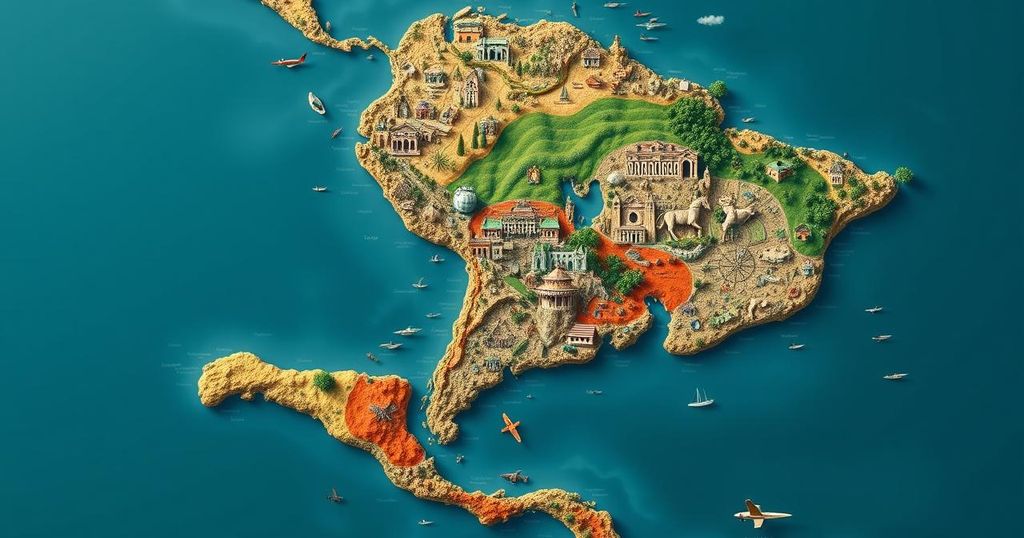The early twentieth century saw Latin America experience economic growth and political stabilization, yet it faced significant challenges. The region dealt with the impact of World War I and the ensuing Great Depression, which saw shifts in economic policy and a rise in nationalism. Despite advancements in urbanization and the emergence of a middle class, deep social disparities persisted. Transportation improvements helped connect disparate populations, fostering a shared national identity.
By the early twentieth century, Latin America was experiencing notable economic growth and moderate political stabilization; however, these advancements faced numerous challenges over the ensuing decades. While Mexico encountered significant turmoil and economic decline amidst the Mexican Revolution that began in 1910, other regions faced both internal and external pressures that stemmed from an increasing population and an evolving integration into the global economy. During World War I, emotional ties to the warring alliances were limited, except among certain immigrant populations and liberal intellectuals. Brazil was the only significant Latin American nation to enter the war alongside the United States, while others like Mexico and Argentina sought leadership roles in promoting neutrality. The region’s economies suffered from disrupted trade, with countries like Argentina experiencing a drastic decline in exports during the war. However, post-war demand surged and led to economic booms, exemplified by Cuba’s sugar market which saw wild price fluctuations driven by demand and overproduction. As the 1920s unfolded, foreign investments surged, mainly from the United States, significantly altering Latin America’s economic landscape. Yet, this came hand in hand with growing nationalist sentiments, influenced by cultural pride and a backlash against foreign dominance. The onset of the Great Depression in 1929 introduced sharp economic reversals, leading to increased tariffs and a shift toward protecting domestic industries. Population changes reflected varied outcomes across the region; some areas remained largely rural, while urbanization and industrial development transformed others, particularly in Brazil and Argentina where significant population growth continued. The social structure, however, revealed deep disparities, as rural workers and urban laborers faced contrasting realities. The emergence of a middle class hinged on educational advancements, enabling upward mobility, albeit with varied success across different sectors. Transportation developments aided in connecting urban and rural populations, facilitating a broader national identity through shared access to mass culture and resources. Air travel, among other innovations, further unified distant regions, reinforcing social changes initiated in the earlier part of the century.
The historical context of Latin America through the early to mid-twentieth century reflects a complex narrative of economic growth and societal challenges. Following the colonial period, the region grappled with various issues, including the consequences of Independence movements, foreign intervention, and the impacts of global conflicts. The study of these dynamics offers insight into the social and economic transformations experienced across nations. The post-World War I era was marked by a rise in nationalism and significant economic shifts, while the Great Depression brought new struggles that reshaped economic policies and societal structures. Understanding these developments is crucial to grasp the multifaceted history of Latin America.
In summary, the trajectory of Latin America throughout the early twentieth century demonstrates a interplay between economic growth and sociopolitical upheaval. While the region witnessed notable advancements, particularly in urbanization and industrialization, the effects of foreign influence and the challenges posed by external economic factors led to significant nationalistic movements. Ultimately, the complex social fabric of Latin America continued to evolve, reflecting the diverse experiences of its inhabitants during periods of both prosperity and crisis.
Original Source: www.britannica.com







